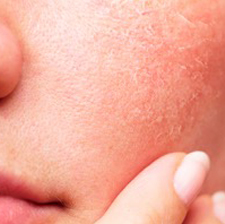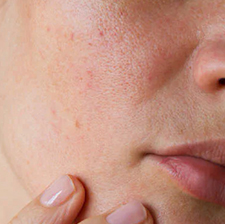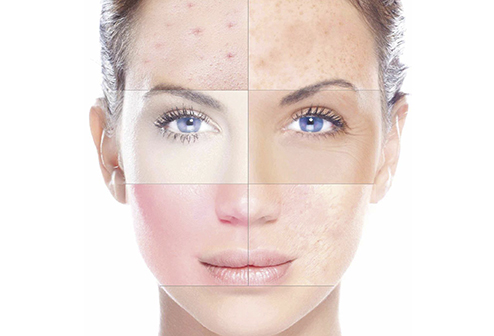What’s Your Skin Type? SKIN BIOTYPES:
The biotype is the biological pattern of each skin type. Biotypes are classified according to the secretions that make up the hydrolipidic film of the skin.
From a cosmetic point of view, the following skin biotypes can be distinguished:
EUDERMIC SKIN:
Ideal normal skin, balanced in moisture and oiliness; smooth, fine, flexible surface; uniform color, with moderate shine, hardly visible pores. Free from flaking, blackheads or impurities. Example: babies and children.

OILY SKIN:
Well moisturized. Thick. Dilated follicles, shine, visible pores and increased thickness.
Oily and shiny surface. It has reddish and yellowish patches in different areas. A lot of hygiene is required because, otherwise, blackheads may become infected and pores may dilate. The skin may thicken with large pilosebaceous orifices. The advantage of this skin type is that it ages more slowly due to its high resistance to external agents thanks to the extended sebum layer. Nervousness and exhaustion, hyperhydrocarbonated diets and certain hormonal treatments favor excessive sebum secretion.

DRY OR FINE SKIN:
Thin, tight, reactive, inelastic skin, with imperceptible pores, telangiectasias, dehydrated, alipic. The lack of moisture retention is caused by changes in the environment, poor nutrition, the passage of time. Dry skin is caused by malfunctioning sebaceous glands that do not produce enough fluids to lubricate the skin and protect it against the loss of water. It tends to wrinkle permanently. It has alkaline pH and is prone to infections, e.g. rosacea.

COMBINATION OR MIXED SKIN:
Oily in the T-zone (forehead, nose and chin) and dehydrated or dry in the contours (cheeks and sides) with clogged pores, flaky temples and cheekbones. Applying oil-absorbing masks on the T-zone once a week will help control the shine on your face.


